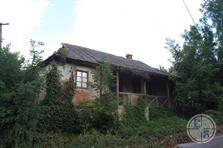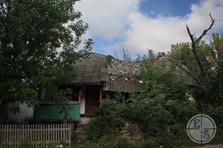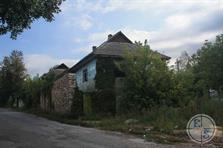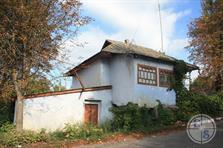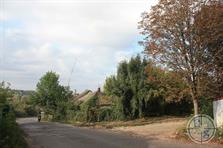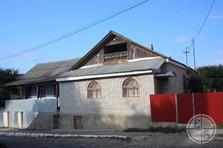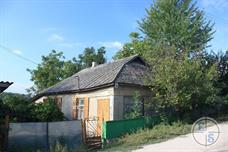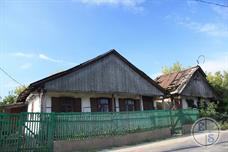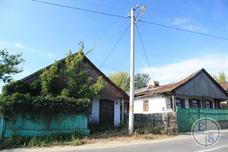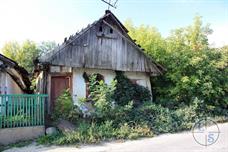Tomashpol
An indirect indication of possible accommodation Tomashpol Jews in the first half of the XVII century. is evidence of Jewish youths, who fled from the Cossacks of Komargoroda in Tulchin recorded in the responsa of Rabbi Abraham Cohen Lviv Rappoport.
References to documents Tomashpol Khmelnytsky era are extremely rare: apparently, the city was destroyed in the early months of the uprising (in military dispatches more frequently mentioned is a few kilometers from Tomashpol downstream Rusava impregnable fortress wall). After signing the contract Zborowski in 1649 Tomashpol remained under the control of the territory of the Cossack regiment Bratslav. It is hard to imagine that anyone remaining in the city of the Jews managed to survive the bloody years.
Tomashpol began to be occupied and rebuilt in the first decades of the XVIII century., When the edge of the empty for a decade of wars and Turkish occupation, its Polish owners returned. On the ruins of the city Jewish town grew rapidly. A census in 1765 counted 108 houses, inhabited by 446 Jews. The total number of communities, including the Jewish seven nearby villages, was 531 persons.
In 1827, in the small town it was only two merchant guild had the title: Abraham-Leib Wolf Dubchak and Kaufman, in 1838 - the same Dubchak and Meilakh Geyshman. In 1852, 77 families of artisans were registered here, all of them were Jews.
In 1853, according to official figures in Tomashpol it was a stone synagogue and two prayer houses.
References to documents Tomashpol Khmelnytsky era are extremely rare: apparently, the city was destroyed in the early months of the uprising (in military dispatches more frequently mentioned is a few kilometers from Tomashpol downstream Rusava impregnable fortress wall). After signing the contract Zborowski in 1649 Tomashpol remained under the control of the territory of the Cossack regiment Bratslav. It is hard to imagine that anyone remaining in the city of the Jews managed to survive the bloody years.
Tomashpol began to be occupied and rebuilt in the first decades of the XVIII century., When the edge of the empty for a decade of wars and Turkish occupation, its Polish owners returned. On the ruins of the city Jewish town grew rapidly. A census in 1765 counted 108 houses, inhabited by 446 Jews. The total number of communities, including the Jewish seven nearby villages, was 531 persons.
In 1827, in the small town it was only two merchant guild had the title: Abraham-Leib Wolf Dubchak and Kaufman, in 1838 - the same Dubchak and Meilakh Geyshman. In 1852, 77 families of artisans were registered here, all of them were Jews.
In 1853, according to official figures in Tomashpol it was a stone synagogue and two prayer houses.
Tomashpol township Bratslav province, located on a high promontory at the confluence of two small rivers and surrounded on three sides by deep valleys, was first mentioned in documents in 1616 The city was named after its owner, the Polish crown chancellor Tomasz Zamoyski (son of Jan Zamoyski), in which around the town were built fortifications.
Tomashpol mentioned in the travel diary of Ulrich von Werdum for 1672, however, the French diplomat did not describe any urban buildings: maybe this time the name of the city only ruins remain so.
In the administrative division of the newly formed Podolia in 1795 Tomashpol was included in the district Yampolsky.
Opened in 1873 in Tomashpol sugar refining plant (according to other sources, the plant was purchased in 1870 from the landowner Felix Sobanskaya "Partnership Trostyanetsky of sugar plant") over time, it grew into one of the largest sugar production region. This plant, like many others of sugar factories in Ukraine, owned by Brodsky, one of the richest Jewish families in Russia.
Tomashpol mentioned in the travel diary of Ulrich von Werdum for 1672, however, the French diplomat did not describe any urban buildings: maybe this time the name of the city only ruins remain so.
In the administrative division of the newly formed Podolia in 1795 Tomashpol was included in the district Yampolsky.
Opened in 1873 in Tomashpol sugar refining plant (according to other sources, the plant was purchased in 1870 from the landowner Felix Sobanskaya "Partnership Trostyanetsky of sugar plant") over time, it grew into one of the largest sugar production region. This plant, like many others of sugar factories in Ukraine, owned by Brodsky, one of the richest Jewish families in Russia.
Pogrom wave of 1881 - 1882 gg. not directly affected Tomashpol Jews. By 1889, the number reaching five thousand Jews in the town has increased considerably. In Tomashpol opened a private Jewish school, a library with a collection of books in Russian, Hebrew and Yiddish.
At the beginning of the XX century Tomashpolsky community had in its composition about six thousand men, and held six prayer houses. Some of them were kloyzami Hasidic rabbi, others belonged to communities of artisans - butchers, furriers ( "Kushnerov") and others. A massive two-storey stone building old Great Synagogue stood near the sugar refining plant, the walls of her prayer hall were decorated with paintings. In addition to the headers (which were about ten) in the town was a Talmud Torah, as well as two women and one mixed private Jewish school.
In 1919, at the height of the Civil War, Tomashpol standing in the path of the various military units have repeatedly been subjected to robbery and plunder. In September 1919, five days Denikin regiment of the Kuban Cossacks plundered the town. The delegation, which included two Jews and one Christian, tried unsuccessfully to achieve acceptance in the regimental commander or commandant of the town.
In late February - early March 1920, Romania refused to allow into their territory of the backing of the Volunteer Army. Denikin's troops passed through Tomashpol to Poland, looted Jewish homes and tortured Jews in search of valuables. The soldiers raped women in front of their families, and then killed their victims. As a result of riots 25 people were killed, 210 wounded, and place set on fire.
At the beginning of the XX century Tomashpolsky community had in its composition about six thousand men, and held six prayer houses. Some of them were kloyzami Hasidic rabbi, others belonged to communities of artisans - butchers, furriers ( "Kushnerov") and others. A massive two-storey stone building old Great Synagogue stood near the sugar refining plant, the walls of her prayer hall were decorated with paintings. In addition to the headers (which were about ten) in the town was a Talmud Torah, as well as two women and one mixed private Jewish school.
In 1919, at the height of the Civil War, Tomashpol standing in the path of the various military units have repeatedly been subjected to robbery and plunder. In September 1919, five days Denikin regiment of the Kuban Cossacks plundered the town. The delegation, which included two Jews and one Christian, tried unsuccessfully to achieve acceptance in the regimental commander or commandant of the town.
In late February - early March 1920, Romania refused to allow into their territory of the backing of the Volunteer Army. Denikin's troops passed through Tomashpol to Poland, looted Jewish homes and tortured Jews in search of valuables. The soldiers raped women in front of their families, and then killed their victims. As a result of riots 25 people were killed, 210 wounded, and place set on fire.
In June 1920, the county Tomashpol Soviet power was established. In 1923 Tomashpol became a district center in the mid-1920s. Here the Jewish parochial council was formed. In the town opened a Jewish seven-year school (closed in 1937) and a kindergarten. Until 1938 there was Tomashpol Jewish collective farm "Giant" with a cattle farm with 400 cows. This farm was one of the most successful in the field. Along with the participation of the Jewish youth in the Komsomol organization, in Tomashpol until the end of the 1920s the Zionists continued to work: in 1923-1924. Here, there were 15 members of the "HeHalutz" organization, ready young people to agricultural work in Palestine.
Before the war, the authorities shut down a large synagogue, minyany continued to gather in private homes.
In 1939 there lived 1863 Jews (63% of the population).
Before the war, the authorities shut down a large synagogue, minyany continued to gather in private homes.
In 1939 there lived 1863 Jews (63% of the population).
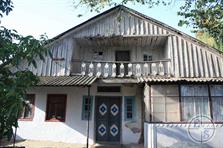 |
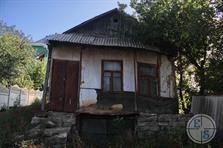 |
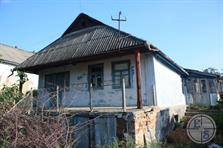 |
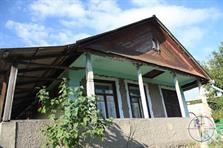 |
| Former inn | Jewish houses in the trade area | ||
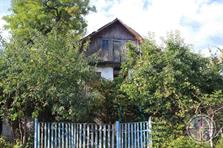 |
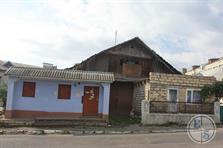 |
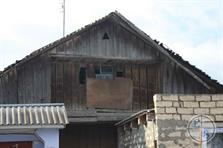 |
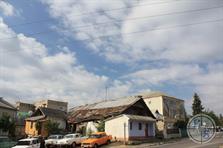 |
| Another inn | A characteristic feature - a wooden balcony on the second floor | ||
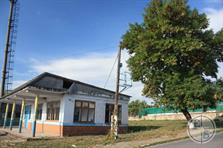 |
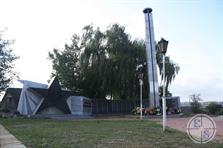 |
||
| Modern bus station |
During the month that has passed since the declaration of war to the beginning of the occupation, many Jewish men were drafted into the army. At the approach of German parts Tomashpol authorities provided wishing to evacuate several carts. Most of the refugees could not go far, and returned to the place, finding their homes looted.
July 20, 1941 in Tomashpol entered the German infantry unit. The Nazis ordered that all Jews wear a white armband with a Star of David sewn. July 25 the first six Jews were shot.
According to eyewitnesses, in, in August Tomashpol arrived punitive detachment headed by SS men. Early in the morning it was assembled gathering of representatives of the Ukrainian population, in order to solve the problem of the Jews. Speakers at the gathering, and among them were well-known in Tomashpol people, they said that "the Jews should be exterminated like rotten meat, because they have always lived at the expense of the Ukrainians." The gathering unanimously ruled their neighbors Jewish death sentence. About an hour later the main street of the old woman ran-Ukrainian, and cried out in a loud voice: "Good people, tick, where your bachut, more you want vbivati!" But it was already running pozdno- to Jewish homes were approaching the police. Jews were driven towards the Jewish cemetery and shot, the weak and the sick killed lopytami. There were shot to death and covered with earth 150 Jews (according to other sources, more than 240 people were killed).
Shortly after the destruction of stocks Tomashpol was included in Transnistria - Romanian occupation zone. In December 1941, the occupation authorities forced all Jews within twenty-four hours into a ghetto in the eastern part of town. The ghetto was surrounded by barbed wire. Jews settled in great distress at the 10 to 12 people in the room. Warden ghetto Zalman Bronfman was appointed to guide the community was elected a committee of 12 people.
July 20, 1941 in Tomashpol entered the German infantry unit. The Nazis ordered that all Jews wear a white armband with a Star of David sewn. July 25 the first six Jews were shot.
According to eyewitnesses, in, in August Tomashpol arrived punitive detachment headed by SS men. Early in the morning it was assembled gathering of representatives of the Ukrainian population, in order to solve the problem of the Jews. Speakers at the gathering, and among them were well-known in Tomashpol people, they said that "the Jews should be exterminated like rotten meat, because they have always lived at the expense of the Ukrainians." The gathering unanimously ruled their neighbors Jewish death sentence. About an hour later the main street of the old woman ran-Ukrainian, and cried out in a loud voice: "Good people, tick, where your bachut, more you want vbivati!" But it was already running pozdno- to Jewish homes were approaching the police. Jews were driven towards the Jewish cemetery and shot, the weak and the sick killed lopytami. There were shot to death and covered with earth 150 Jews (according to other sources, more than 240 people were killed).
Shortly after the destruction of stocks Tomashpol was included in Transnistria - Romanian occupation zone. In December 1941, the occupation authorities forced all Jews within twenty-four hours into a ghetto in the eastern part of town. The ghetto was surrounded by barbed wire. Jews settled in great distress at the 10 to 12 people in the room. Warden ghetto Zalman Bronfman was appointed to guide the community was elected a committee of 12 people.
The government used the Jews in hard labor in the construction of roads in the quarry, on clearing roads of snow, chopping wood, carrying coal, and so on. N. On the way to work the prisoners exchanged taken things from the house for food. The inhabitants of the ghetto, crowded into a small area and did not have the right of withdrawal beyond it, suffered from exhaustion and typhus and other infectious diseases. By order of the female community leadership teams visited all houses, collecting donations for the benefit of the poor and the sick. Some Ukrainians helped Jews, giving them food through the barbed wire.
After the Battle of Stalingrad in the ghetto regime were introduced concessions, in particular, once a week, on Sundays, I am allowed to go out for an hour, which allowed prisoners to exchange the latest things for food.
In 1943, the ghetto was 1128 Jews, including several families from nearby towns Podolia and Bessarabia.
After the liberation Tomashpol March 16, 1944 by Soviet troops to stay here more than a thousand Jews.
After the Battle of Stalingrad in the ghetto regime were introduced concessions, in particular, once a week, on Sundays, I am allowed to go out for an hour, which allowed prisoners to exchange the latest things for food.
In 1943, the ghetto was 1128 Jews, including several families from nearby towns Podolia and Bessarabia.
After the liberation Tomashpol March 16, 1944 by Soviet troops to stay here more than a thousand Jews.
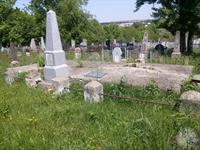 |
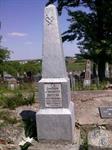 |
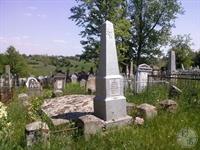 |
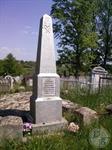 |
| The monument on a mass grave, new cemetery | Near - another tomb monument with twin | ||
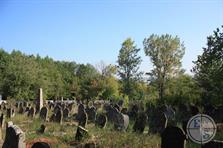 |
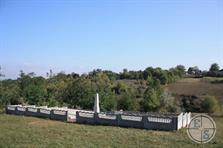 |
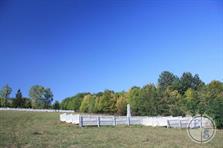 |
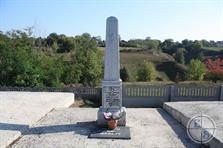 |
| New cemetery | This place is located just outside the cemetery, in the valley | ||
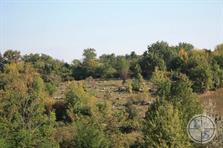 |
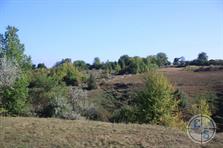 |
||
| The old cemetery on the hillside |
In Tomashpol partially preserved small-town buildings 19 - beg. 20th centuries. Many houses are rebuilt, but behind the screen of modern building materials easy to guess their Jewish past.
For the modern rural development of small towns characterized by houses with fenced yard, garden or front garden. House in the center of the Jewish town always went directly to the facade outside, often near the entrance to the residential part was located the entrance to the shop, or trade is carried out directly from the windows of the house, and served as a counter-closing window of a wooden or metal shutters. Therefore, an attempt to "put" a house in the fence, to adapt it to the modern standard of the rural street, looks a bit unnatural. This is particularly evident if the distance from home to the fence no more than half ... But these fragments of the 19th century and is the highlight of modern Tomashpol, something for which definitely worth a look here.
For the modern rural development of small towns characterized by houses with fenced yard, garden or front garden. House in the center of the Jewish town always went directly to the facade outside, often near the entrance to the residential part was located the entrance to the shop, or trade is carried out directly from the windows of the house, and served as a counter-closing window of a wooden or metal shutters. Therefore, an attempt to "put" a house in the fence, to adapt it to the modern standard of the rural street, looks a bit unnatural. This is particularly evident if the distance from home to the fence no more than half ... But these fragments of the 19th century and is the highlight of modern Tomashpol, something for which definitely worth a look here.
Tomashpol, 2012, 2015
In the post-war Tomashpol had a significant number of Jews and maintained some of the features of traditional life. Between 1963 and 1966, when Tomashpol lost the status of the regional center, began a mass exodus of Jews in the larger cities. Ukrainians are exempt houses bought from the surrounding villages. Nevertheless, even in 1970 -80-ies. Tomashpol hundred Jews lived in varying degrees according to the old traditions.
In 2012, a few Jews live in Tomashpol.
V.Lukin, "100 Jewish settlements in Ukraine"
In 2012, a few Jews live in Tomashpol.
V.Lukin, "100 Jewish settlements in Ukraine"
Vinnitsa Region

My shtetl
My shtetl
Jewish towns of Ukraine
Jewish towns of Ukraine
